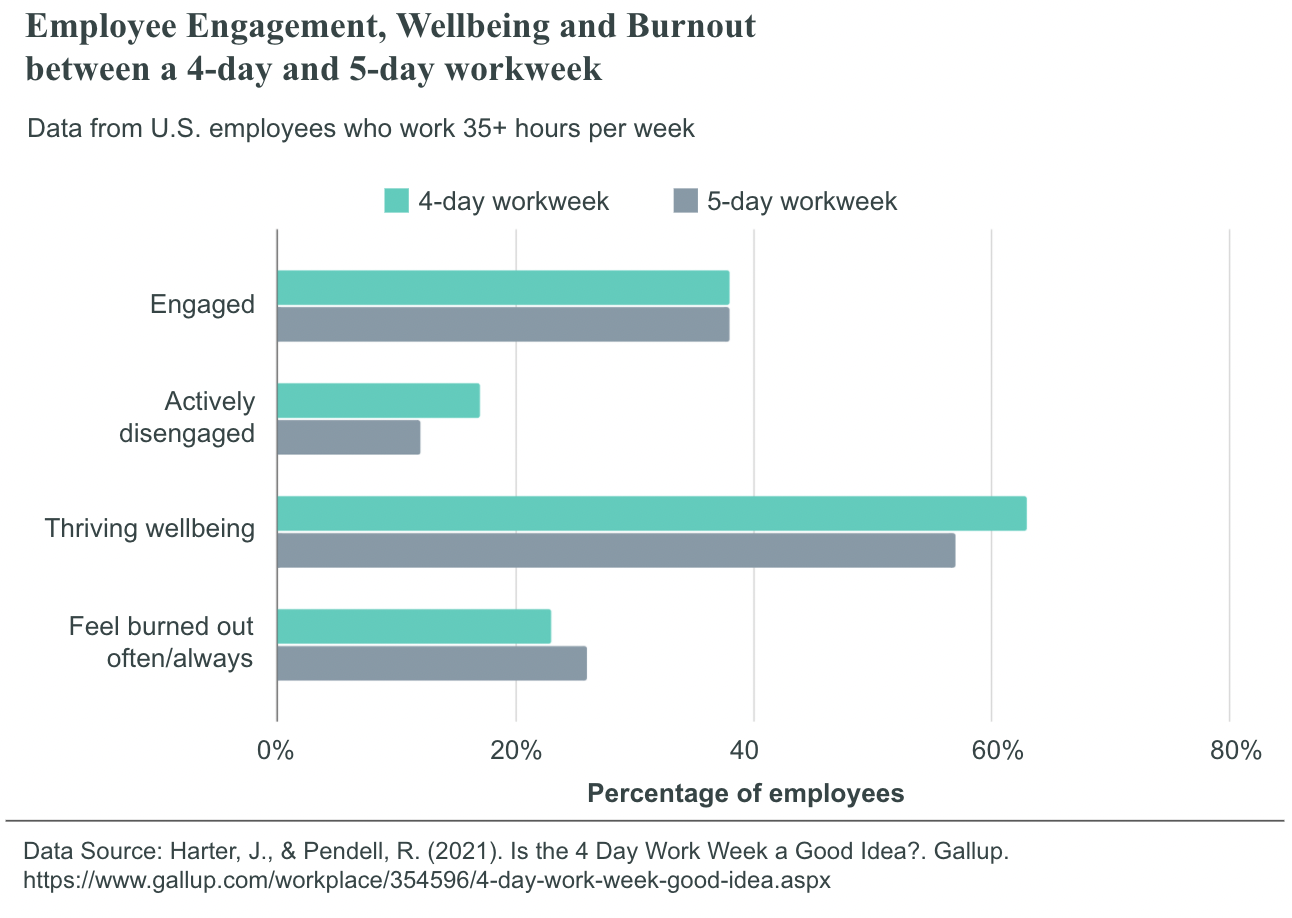|
4-day weeks can deliver big benefits without sacrificing productivity. When Icelandic government workers switched to a 35- or 36-hour workweek (down from 40), researchers found it improved their health and work-life balance while lowering rates of stress and burnout. The kicker: productivity either stayed the same or improved. That being said…
Slashing schedules can detract from workplace culture. Shorter weeks mean packing more work into less time, and that can be intense. At one startup, 40% of employees reported feeling more stressed after implementing a shortened week, even though 94% still voted to keep it in place. This added pressure also leaves less time for good old human interaction (remember human interaction? Nostalgic sigh).
Shorter weeks won't make your job fun. A Gallup study found that Americans who worked 4 days a week reported the highest rates of thriving wellbeing — but were also more likely to be “actively disengaged” from their jobs. In other words, implementing a shorter week won't automatically make people feel more positive about their work. Instead, it just gives them more time to spend on other spheres of life that do spark joy.

Working hours matter, but so does flexibility. Like shorter schedules, flexible job arrangements are also linked to improved wellbeing — but without hurting engagement. When workers are given more freedom to decide when and where they work, they become more engaged with what they’re doing, and that engagement leads to better performance. When we focus exclusively on the number of hours we work, we may lose sight of these important considerations.
Our brains might be suited to shorter days. Surveys have found that the average office worker is only really focused for about 3 hours a day. This suggests that rather than cutting down the length of the workweek, we may do better to experiment with 5- or 6-hour days: 3 hours of deep work, and 2–3 more for meetings, emails, and other tasks that eat up less cognitive bandwidth.
Every workplace is different. There’s no single schedule or approach to working hours that will be equally successful across all industries, cultures, and employee demographics. Organizations considering a new policy on working hours should be prepared to iterate: run a pilot, assess the results, and then scale up, continuously checking in with employees and making tweaks as needed.
|